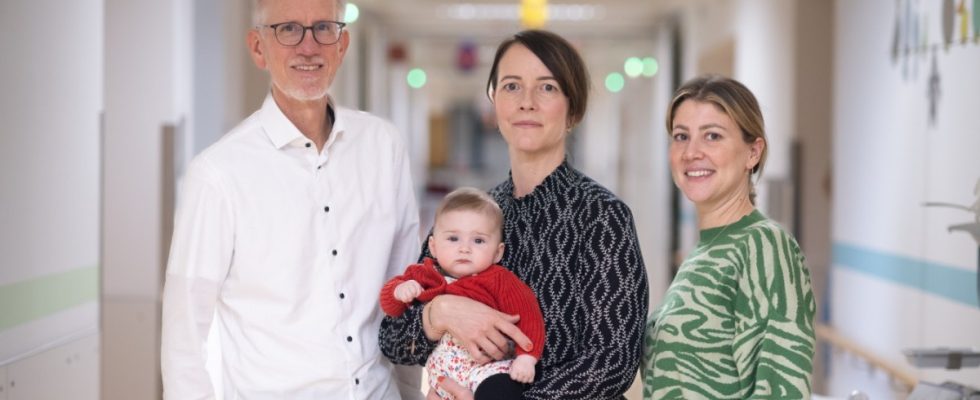Breast milk is sweet. The whitish mixture of milk sugar, casein, carbohydrates, antibodies, immune cells and 92.5 percent water is the best thing a baby can get. There are more than 2,000 important ingredients in one drop of breast milk.
However, mothers of premature babies who are born before the 32nd week of pregnancy cannot immediately provide their baby with their own breast milk: because they are in the intensive care unit, have had a cesarean section or have to take medication. So that the newborn can still get the precious drink, there is now a human milk bank for premature babies in the neonatology department at the Munich Clinic Harlaching. After Regensburg, Passau, Augsburg and Großhadern, it is the fifth in Bavaria.
Premature babies in Harlaching and Schwabing can now be supplied with breast milk donated by other women. “It has been proven that children who have been fed breast milk after birth get fewer infections, develop better and have fewer allergies,” says senior physician and neonatologist Silke Brodkorb.
For optimal nutrition for babies, the World Health Organization (WHO) always recommends breast milk, then donated human milk as a second choice and artificial breast milk based on cow’s milk as a third choice. “At the age of two hours, the newborn needs its first food. Breast milk feeding is also very important so that it can excrete the tough child’s poop,” explains Brodkorb. In the beginning, a premature baby only gets a little milk. Maybe six milliliters a day.
There are many human milk banks in eastern Germany, but only a few in Bavaria. A reason for the senior physician to initiate the breast milk bank in Harlaching together with Sabrina Weigel, ward manager of neonatology.
Prepared in syringes in portions: donated human milk in the freezer
(Photo: Catherina Hess)
20 milliliters, 30 or even 50. It doesn’t matter how much. Small bottles or syringes filled with donated breast milk lie in the freezer. Equipped with barcodes so that you know which donor gave how much milk and at what time. Every donation is precious.
Sabrina Weigel checks how much milk the mothers have given in the milk kitchen of the neonatal ward. For example, if it is more than her own baby needs, she asks whether the mother is willing to donate milk. “It’s all on a voluntary basis, of course,” says the station manager. If so, she explains, the mother must fill out a questionnaire. According to Marcus Krüger, head of neonatology at the Munich Clinic Schwabing and Harlaching, a donation is not possible in the case of viral diseases, long-term medication or drug use.
However, if the mother is a candidate, a microbiological sample is taken from her milk under the highest hygienic conditions and checked for germs and bacteria in a laboratory. The milk is pasteurized, a sample is taken, portioned and frozen at minus 26 degrees. If everything is OK with the milk donation at the end, the bottle gets an “F”. It stands for “released”. Krüger emphasizes: “We work very meticulously with donated milk.”
One of Brodkorb and Weigel’s heartfelt concerns is to encourage the mothers of premature babies to produce milk as quickly as possible, as both women say. Because the hormone prolactin, which stimulates milk production, doesn’t like stress. But a premature birth means “maximum stress,” says Brodkorb. After a premature birth, mother and child usually receive separate medical care. Stress again. “Looking at the child is so important for milk production,” says Weigel. So you try to get the mother to pump soon to stimulate her milk production. And if the mother can even donate milk later, she reports, they are “really proud.”
A liter of breast milk. That’s how much is currently frozen in the human milk bank, which has only been around for a few weeks. That doesn’t sound like much. “But with this,” says Krüger happily, “the next five premature babies can be cared for again.”

